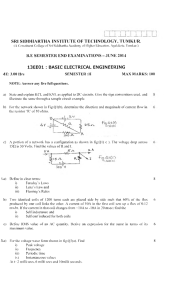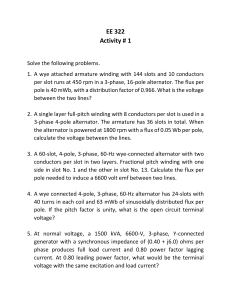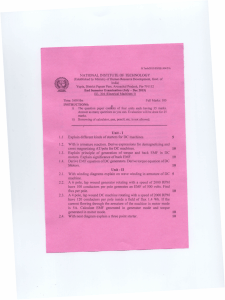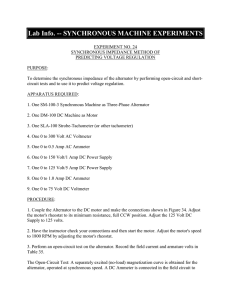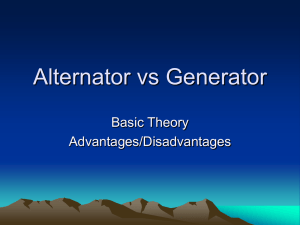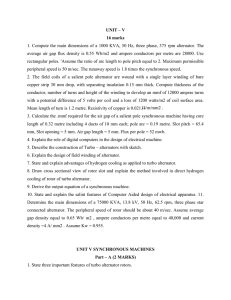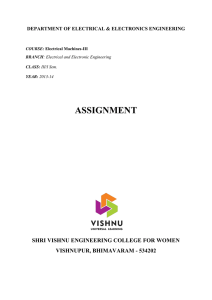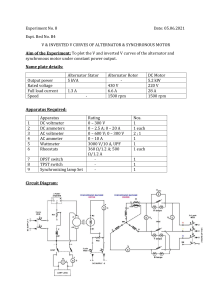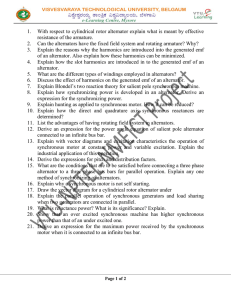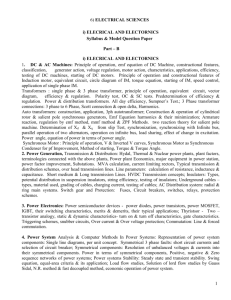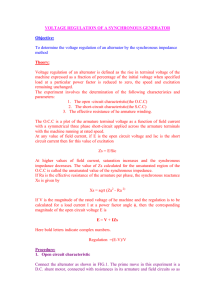Xd And Xq Of A Salient
advertisement
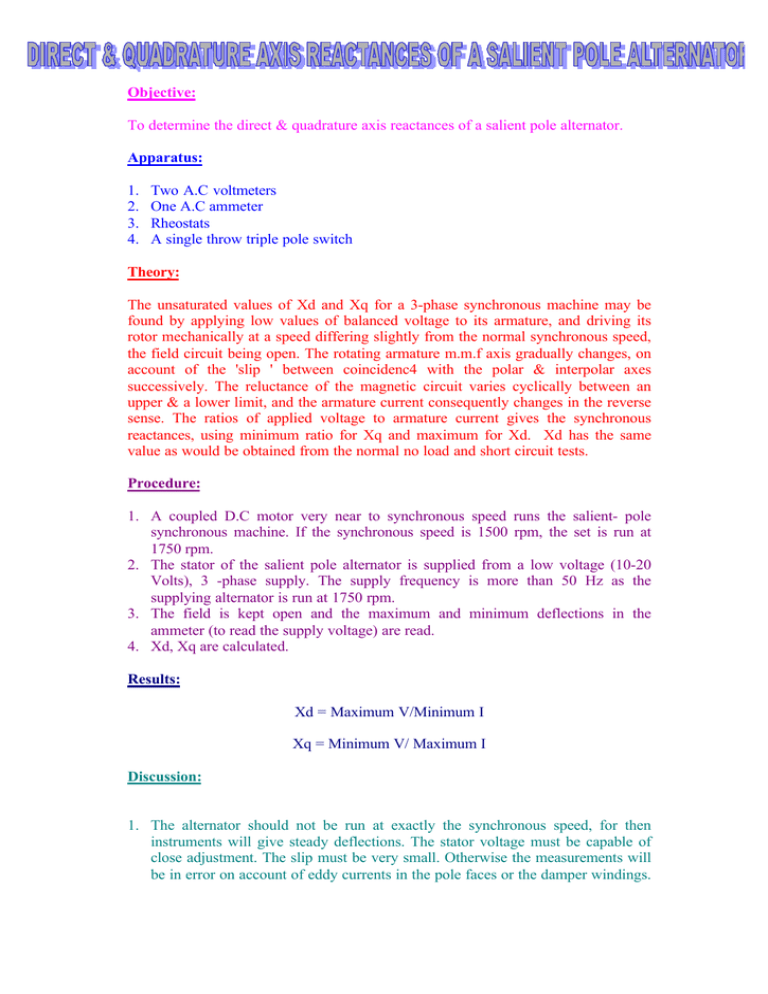
Objective: To determine the direct & quadrature axis reactances of a salient pole alternator. Apparatus: 1. 2. 3. 4. Two A.C voltmeters One A.C ammeter Rheostats A single throw triple pole switch Theory: The unsaturated values of Xd and Xq for a 3-phase synchronous machine may be found by applying low values of balanced voltage to its armature, and driving its rotor mechanically at a speed differing slightly from the normal synchronous speed, the field circuit being open. The rotating armature m.m.f axis gradually changes, on account of the 'slip ' between coincidenc4 with the polar & interpolar axes successively. The reluctance of the magnetic circuit varies cyclically between an upper & a lower limit, and the armature current consequently changes in the reverse sense. The ratios of applied voltage to armature current gives the synchronous reactances, using minimum ratio for Xq and maximum for Xd. Xd has the same value as would be obtained from the normal no load and short circuit tests. Procedure: 1. A coupled D.C motor very near to synchronous speed runs the salient- pole synchronous machine. If the synchronous speed is 1500 rpm, the set is run at 1750 rpm. 2. The stator of the salient pole alternator is supplied from a low voltage (10-20 Volts), 3 -phase supply. The supply frequency is more than 50 Hz as the supplying alternator is run at 1750 rpm. 3. The field is kept open and the maximum and minimum deflections in the ammeter (to read the supply voltage) are read. 4. Xd, Xq are calculated. Results: Xd = Maximum V/Minimum I Xq = Minimum V/ Maximum I Discussion: 1. The alternator should not be run at exactly the synchronous speed, for then instruments will give steady deflections. The stator voltage must be capable of close adjustment. The slip must be very small. Otherwise the measurements will be in error on account of eddy currents in the pole faces or the damper windings. If in the experiment, the slip is very large, and cannot be adjusted to a smaller value, he measurements are liable to error. 2. The slip tends to pulsate because of fluctuation of torque with the relative pole positions with the result that there is a tendency for Xd to be underestimated. Starter 0-220V V + L F A coupling 220 V D.C 600 ohm 3.65 A - 0- 50V 0-30 A D.C Motor 750/2260rpm 220 V A V 3- phase Variable supply 3-phase 5 kVA 1500 rpm,110V Sine-wave alternator (TEST MACHINE) FIG.1 (a) Starter 0-220V 10.85 ohm + L F A coupling 110 V D.C 176 ohm 3- phase Variable supply to Test Machine - D.C Motor 1500rpm 110 V 70A FIG.1 (b) 3-phase 5 kVA 1500 rpm,110V Sine-wave alternator
